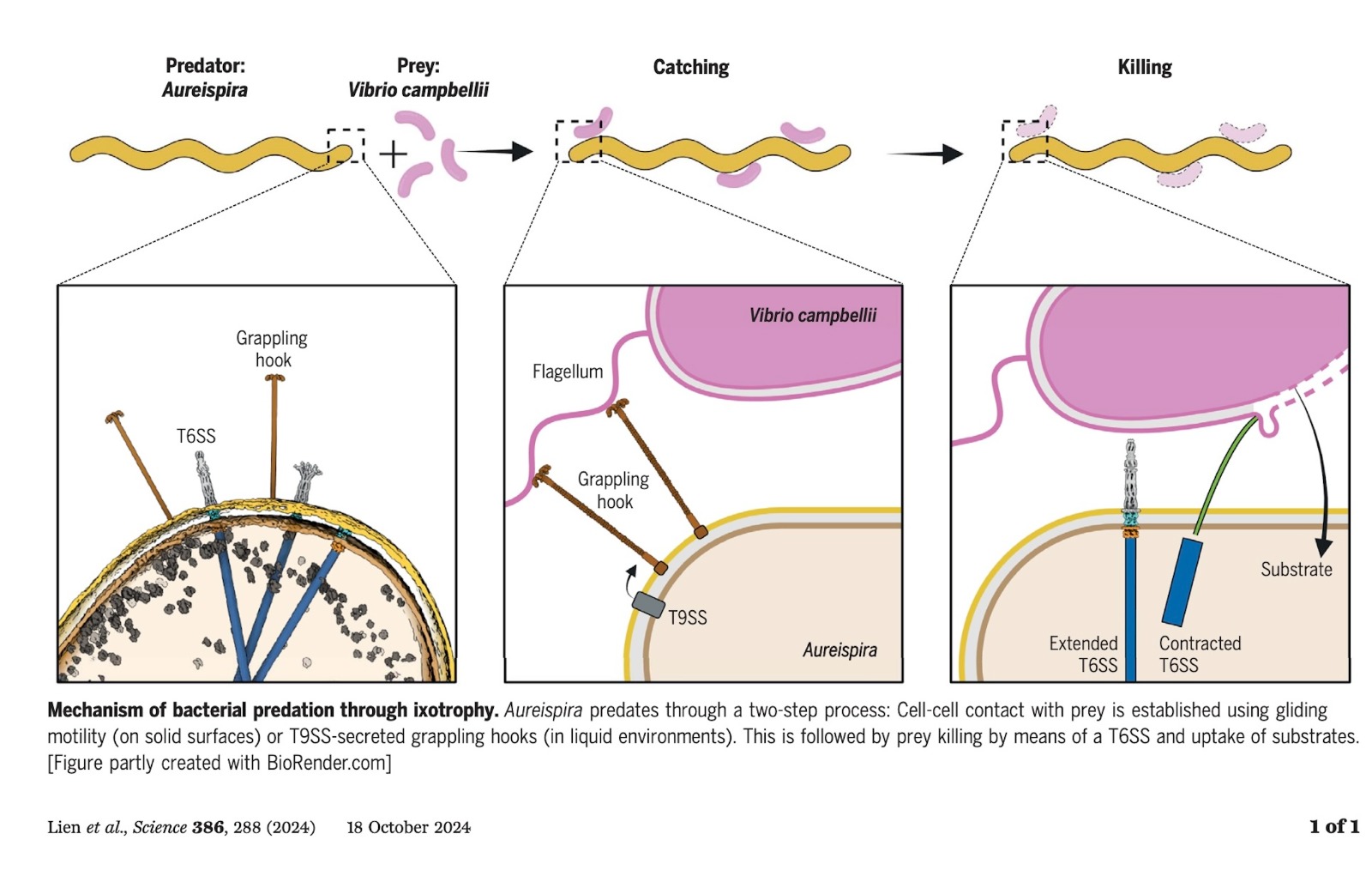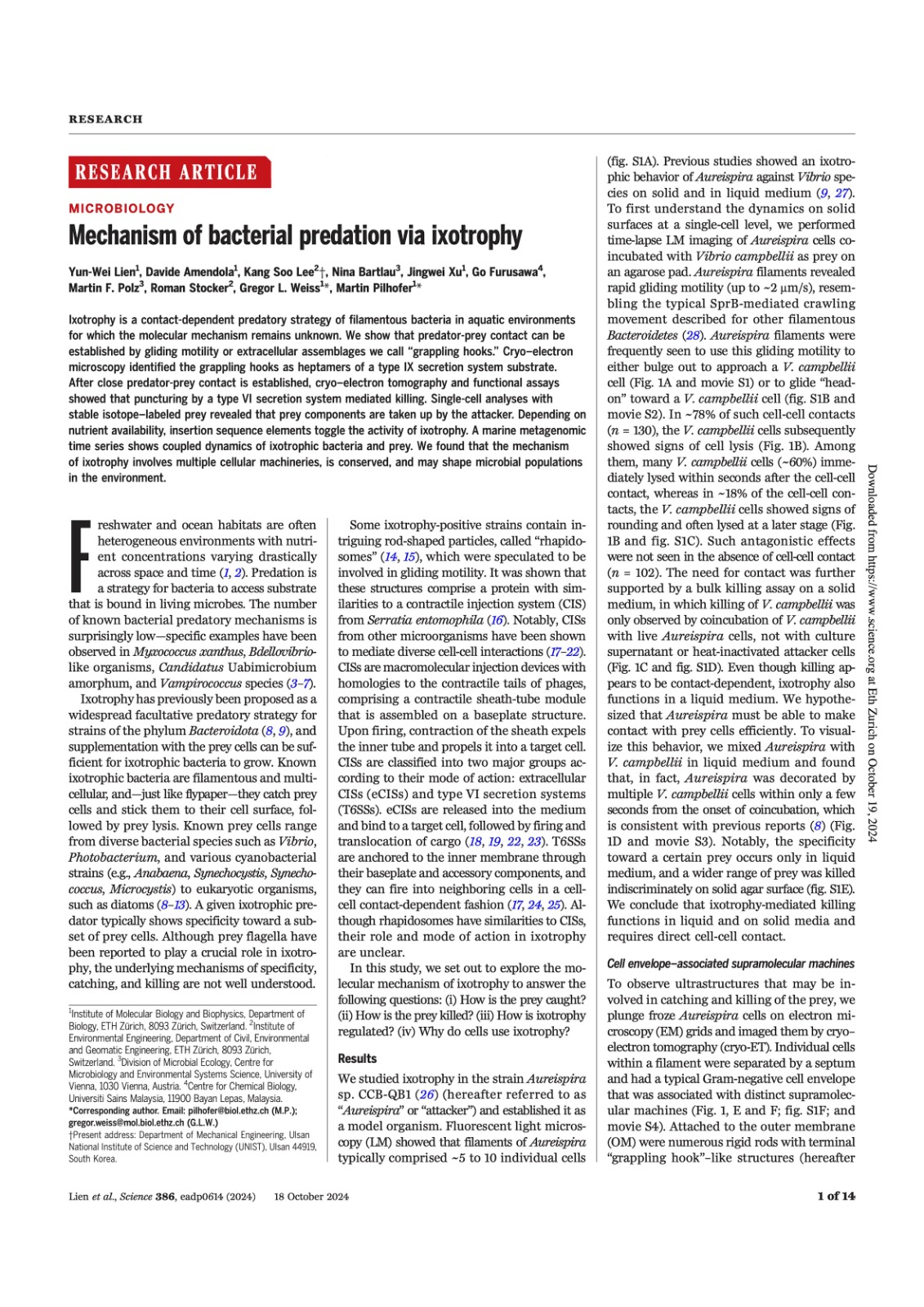USM CCB ACADEMIC PUBLISHED A RESEARCH ARTICLE IN PRESTIGIOUS SCIENCE JOURNAL
USM PENANG, 8 December 2024 – Dr. Go Furusawa from the Centre for Chemical Biology (CCB), Universiti Sains Malaysia (USM), teamed up with a group of researchers from ETH Zürich led by Dr. Lien and Professor Dr. Martin Pilhofer, recently published a research article on the mechanism of bacterial predators in SCIENCE – one of the world’s top academic multidisciplinary journals.

Background of the research work
Bacterial predators can hunt, grab, and eat other microorganisms and are crucial for maintaining bacterial communities in various environments.
Many scientists are interested in how bacterial predators kill and eat their prey because understanding the predation mechanisms may be useful for creating alternatives to antibiotics.
In 2012, as a postdoctoral fellow recently joined the Centre for Chemical Biology USM, Dr. Go Furusawa isolated and characterized a marine filamentous and bacterial predator, Aureispira sp. CCB-QB1, from a coastal area of Penang, Malaysia, and subsequently found that this bacterial predator could remove aquatic pathogenic bacteria, indicating the potential for a novel biocontrol agent on pathogenic bacteria in aquaculture.
Subsequently, appointed as a senior lecturer at CCB, his work, along with the assistance of his graduate students and his colleague, Dr. Lau Nyok Sean, led to the discovery of the whole genome sequence of this bacterial predator and its relatives to explore genes related to its predatory behaviors.


Current discovery
In 2019, Professor Dr. Pilhofer, an expert in cryoEM technique and Dr. Go’s former collaborator, was interested in the predatory mechanism of the bacterial predator in more detail.
Dr. Pilhofer observed the bacterial predator with its prey cells using cryoEM and found two unique structures on the cell membrane. One is a long hook-like structure. Another one is a syringe and needle structure.
The function of the long hook-like structure may hang and capture prey cells. A syringe and needle structure may inject killing factors (some enzymes and small chemicals) into prey cells captured by the long hook, and the prey cell immediately dies after injection of the killing factors.
The combination of long hook-like structures and syringe and needle structures is a novel mechanism in bacterial predators.
Future direction (plan)
The syringe structure may inject killing factors into prey cells. However, it is unclear what kind of killing factors have been released through the syringe structure so far.
Now, Dr. Go’s graduate students are searching for the killing factors from the bacterial predator using transcriptomic and proteomic analyses. These investigations will uncover the complete mechanisms of their predation.
In addition, his graduate student tries to apply bacterial predators to shrimp aquaculture to remove a causative agent of severe shrimp diseases.
The bacterial predators have the potential for an alternative method to create a healthy environment in shrimp aquaculture.
Note: SCIENCE is the peer-reviewed academic journal of the American Association for the Advancement of Science (AAAS) and one of the world's top academic journals. It was first published in 1880, is currently circulated weekly and has a subscriber base of around 130,000. Because institutional subscriptions and online access serve a larger audience, its estimated readership is over 400,000 people.
Source: Centre for Chemical Biology (CCB), USM/Editing: Tan Ewe Hoe
- Created on .
- Hits: 452
